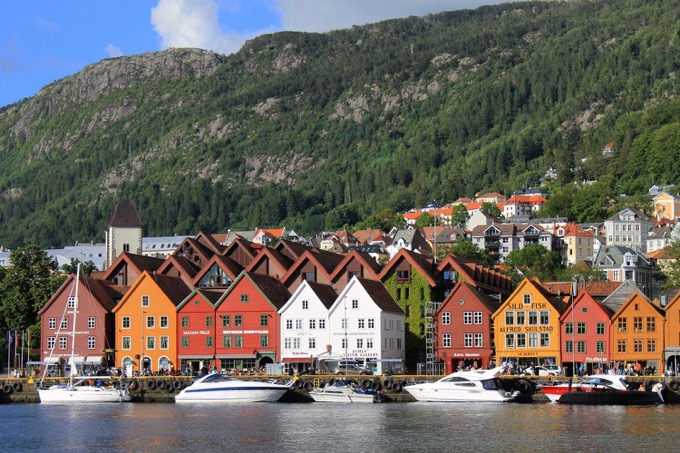
It is known that the Kingdom of Norway belongs to the group of biggest polluters per capita, which is an inglorious record, that is credited to another title – this Scandinavian country is among the world’s largest producers and exporters of oil. Hence, the great interest provoked by Norway a few years ago, when Norway set a rather incredible goal to become a state with a neutral carbon footprint by 2030 is not unusual. Answers to questions about what Norwegians have achieved so far and what role in raising awareness of climate change and reducing emissions has had a comprehensive state campaign Klimaloftet we have requested from Arne Sannes Bjørnstad, the ambassador of Norway in Serbia.
EP: Norway’s original goal of neutral carbon footprint by 2030 has been changed, and today you are trying to reach 40 percent fewer emissions of harmful gases with the same deadline, compared with the 1990s. Which technologies have given the greatest result?
Arne Sannes Bjørnstad: Norway has an extremely high emission of harmful gases that are directly related to the production of oil and gas, with most of the energy produced in this way being used in other countries. In order to reduce emissions, we have introduced carbon capture and sequestration technology (CCS). Greenhouse gases are pumped deep underground and under that pressure, oil or gas is released, and its quality is much better. The system is economically viable because you use harmful gases to expel more oil and gas to the surface and you do not use another type of energy for their pumping.
In some areas, we have achieved significant results. One of them is electromobility, and we can boast that the entire city transport is ecological. Although we have metro, trams and electric buses, the bulk of public transport in Oslo is on biogas that comes from waste. That waste used to be an expense because we had to pay for the transportation and disposal of garbage and in addition, we assigned money for fuel for buses. Now we use waste as a fuel. It is not only economically viable but also a good example of reducing gas emissions.
EP: You mentioned electromobility. Norway is the leader not only in Europe but in the world as well, according to the statistics for 2016 as much as 4 to 10 cars sold in your country were hybrid or electric. What are the benefits the buyer can count on when buying an electric car?
Arne Sannes Bjørnstad: I often joke when I say that in Norway Tesla is better known as a car than it is known as a scientist. This is due to the number of Tesla cars. There are significant tax exemptions that allow the purchase of a luxury electric car for the price of a standard, conventional car. In addition, there are other privileges for driving electric cars. There are reserved free parking spaces in the city area where the owner of an electric car can also charge it. This is one of the better benefits, because “fuel”, which is quite expensive in Norway, is free of charge. Even tolls paid by owners of electric cars are cheaper than for the fossil-fuelled cars. Also, electric car drivers can use yellow lanes for buses and taxi drivers, thereby avoiding usual traffic jams, especially if they travel from the center of Oslo to the suburbs.
The ambitions of the Kingdom of Norway are high and there are many initiatives for further change, not just when it comes to cars, but also other forms of transport. We plan to introduce electric aircraft by 2040 that will operate on shorter routes, and there are also programs to use electric ships. Our goal is to switch to an electric economy instead of a carbon-based economy. We even had a serious debate about the traffic ban introduction in the next few years in Oslo for petrol and diesel-fuelled cars. Some of these projects are just ambitious ideas that we may never meet, but we cannot know it until we try.

EP: Would you say that choosing environmentally friendly solutions in your country is primarily attributed to the mentality of the population, or subsidy and other benefits have a greater impact?
Arne Sannes Bjørnstad: I would say that this is a set of various influences. It is partly due to the education but there are also political and sociological influences when environmental protection is concerned, as well as other reasons. Norway is a poor country when it comes to natural resources if you exclude oil and gas. Due to climatic conditions, agricultural production is a real challenge. On the other hand, we traditionally care about nature because we do not have too much of it and we can see that by the fact that the stock of fish is getting smaller. And we live from nature. We need to maintain and preserve the natural resources that we have. Considering that we were poor before the discovery of oil supplies, we learned not to throw anything away and the tradition of reusing things or recycling has existed since then.
Today people have become more aware of the threats that climate change poses because of climate change and you can clearly see the effects. In the north of Norway, there is a very famous glacier which has always been a great tourist attraction. However, it is disappearing at a high speed, and this is very shocking for people who live from tourism in that area. This very visible evidence is a powerful argument for all advocates of the fight against climate change.
EP: What percentage of electricity produced in Norway comes from renewable sources?
Arne Sannes Bjørnstad: In our country, as much as 99 percent of energy comes from hydropower. We produce enough electricity for our needs, but there is also a seasonal need for importing or exporting the surplus produced. During droughty summers we have a lack of hydropower energy, so we import energy from Denmark or Sweden with whom we have a common electric energy market. This system was established initially as a Nordic initiative, and now Britain, Sweden, and the Netherlands are also members of the common market. In the future, membership should naturally grow. We are also trying to help in the introducing this system in the Balkans, and this takes time. It is necessary to increase the electricity production and expand the market, and that is currently being done.
Inreview by: Nevena Djukic
Read the whole interview in the new issue of the Energy portal Magazine on SUSTAINABLE DEVELOPMENT, March 2018

